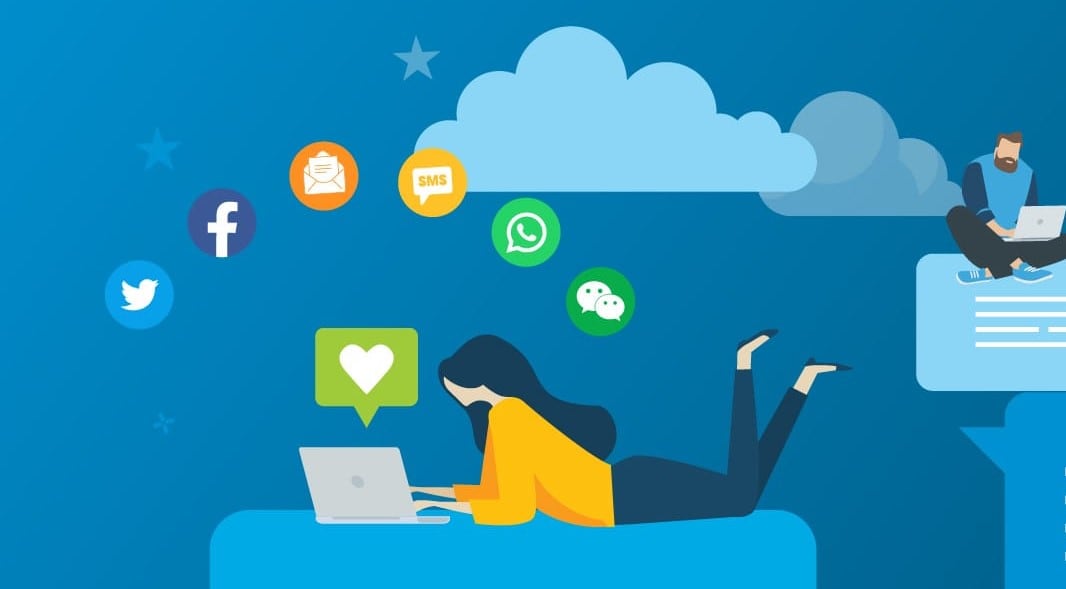Amid the Covid-19 pandemic, maintaining high levels of student engagement appeared to be a losing battle for many higher education institutions. Spring break 2020 heralded the most sudden of changes in the span of a few days. Traditional face-to-face tutoring and in-person events and activities came to an end, in place of remote digital teaching and learning experiences. This undoubtedly made increasing student engagement in higher education a challenge.
The future for higher education is not yet clear as the pandemic and its effects linger on. However, it has taught us one important lesson – institutions must embrace digital transformation. Those who had already begun their journey towards digital transformation coped well, while those who had not struggled to stay connected with their students.
This blog will explore why digital channels are key to increasing student engagement in higher education, and how schools and colleges can take their first step towards digital CX excellence.
The Need for Digital Support in Higher Education
The way students communicate has changed. Millennials and Gen Z show a strong preference for digital communications, with 60% of those surveyed under 35 saying that they “hate calling people”. With the growing demand for remote support, it’s no longer a question of whether digital support in education is necessary, but rather how best to offer these channels.
For higher education institutions to remain relevant, they now need to meet students on their terms at every stage of the student lifecycle – from enrolment through to graduation. The key to increasing student engagement is through accessibility and speed via digital channels. Whether it’s with live chat, social media, email, or SMS integration, students expect their institutions to be available, responsive, and digital.
What’s more, digital transformation in student communication also directly benefits institutions. Live chat is much less expensive than traditional phone support, costing less than 1/3 on average.
Let’s now dig into the key reasons why digital support is so popular among students. If you want a more in-depth look into how to meet student support expectations and learn why student engagement is important, read our new eBook.
Sky-high Expectations – How to Improve Student Support in a Digitally-Demanding World
Student support expectations have never been higher. Learn how your school can exceed these expectations and increase student engagement and satisfaction.
Get the eBook
Free eBook
Accessible support
While phone communication was once the standard for accessible support, times (and preferences) have changed.
Compared to more modern options, phone support usually comes with restrictive hours that can be challenging across time zones. A call also represents a time commitment that many young people are unwilling to make. Unlike phone support that requires calls be passed from one agent to another, live chat allows for a much more seamless customer and agent interaction.
Live chat platforms like Comm100 Live Chat are an easy-to-use and powerful way to reach students on the web and in-app. With routing rules in place, you can make sure students reach the right department every time. Say goodbye to confusing call tress and frustrated students.
Fast support
Live chat is also a very responsive support channel, providing students with fast access to your institution. For a young demographic that has grown up with the expectation of immediate gratification, the importance of responsiveness cannot be understated. 71% of those aged 16-24 believe that customer experience can be drastically improved by quick responses.
The digital nature of live chat means that it can also be integrated with other technologies. A knowledge base can be integrated in the chat console for agents to draw from for quick answers and information that can easily be provided to students. Canned messages can be used in much the same way, saving agents the trouble of retyping common resolutions – and ultimately giving faster support.
All-day, everyday support
While live chat is the best way to connect with students, it’s not always possible to provide live chat support outside of regular business hours. A higher ed chatbot can be used to fill in the gaps in your support. This allows you to offer support after hours so you never miss out on an opportunity to engage with students.
Besides providing 24/7 support, chatbots can also be used to shorten queues by responding immediately and then passing students to live agents if necessary. Chatbots also shorten overall resolution time. By gathering student information before the hand-off in these interactions, the live agent has all the relevant information right away.
Traditional chatbots can miss the context behind questions. In contrast, Comm100 AI Chatbot uses Natural Language Processing (NLP) to engage in much more complex and natural conversations. With this level of intelligence, a bot can handle all your common questions so that your agents have more time to handle complex or sensitive issues.
Further Reading
This blog has only just touched upon why student engagement is important and why higher education must offer digital support. If you want to learn more and understand how your institution can adopt these digital channels to increase student engagement, read our ultimate guide below.
Improving Student Support Services
Today’s students have incredibly high support expectations. Learn how your school can meet these expectations and improve every stage of the student lifecycle in this complete guide.
Read more
Learn more








